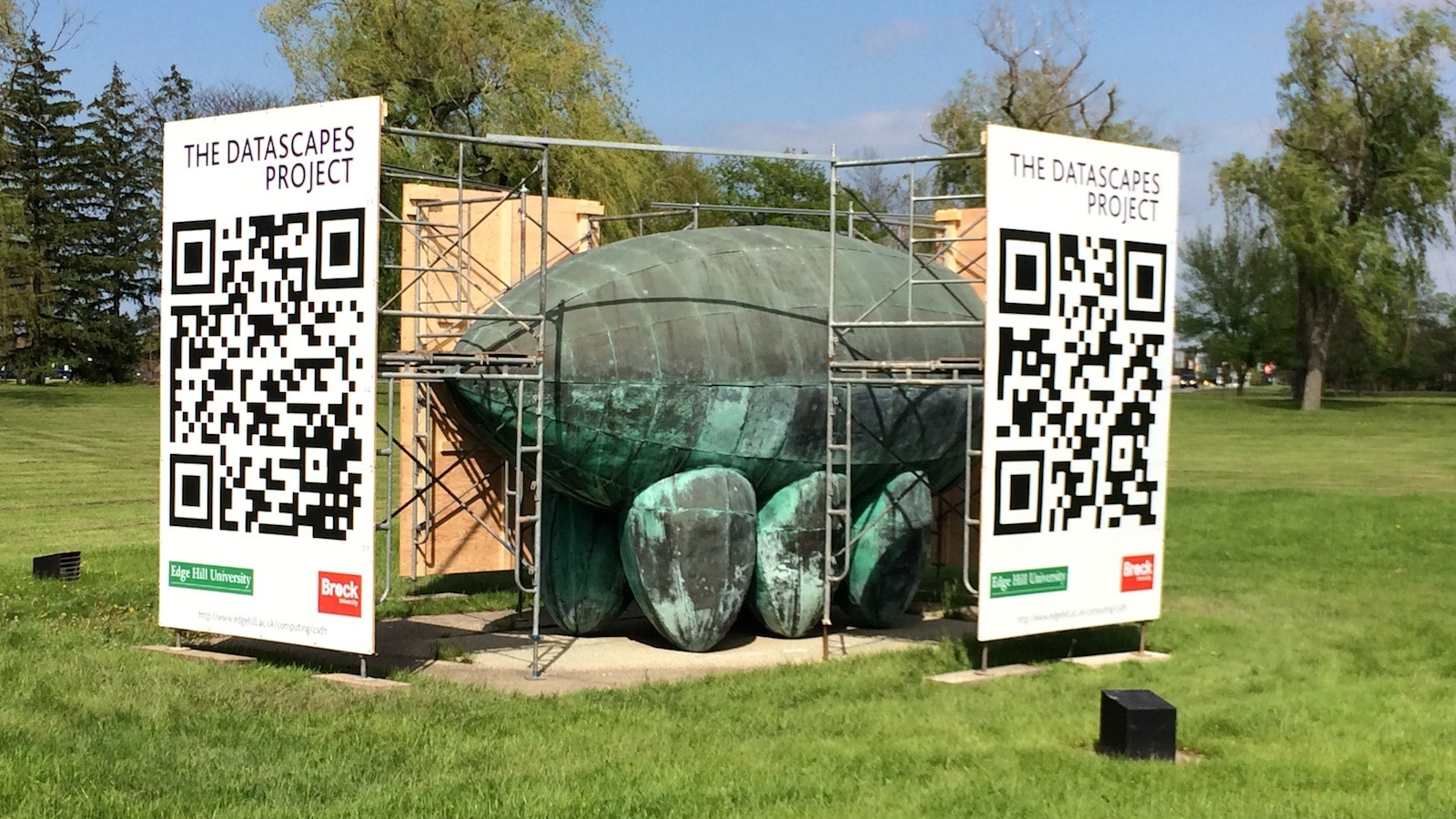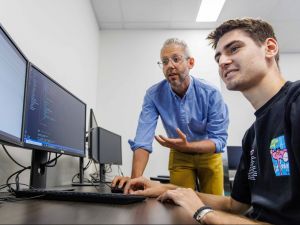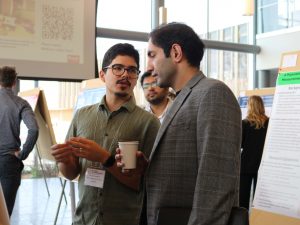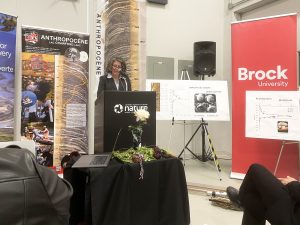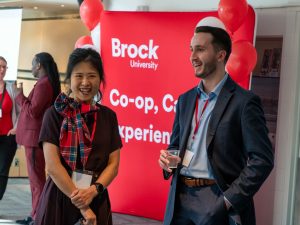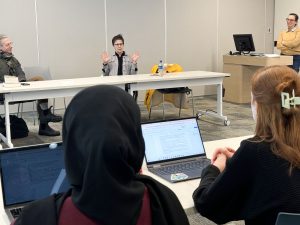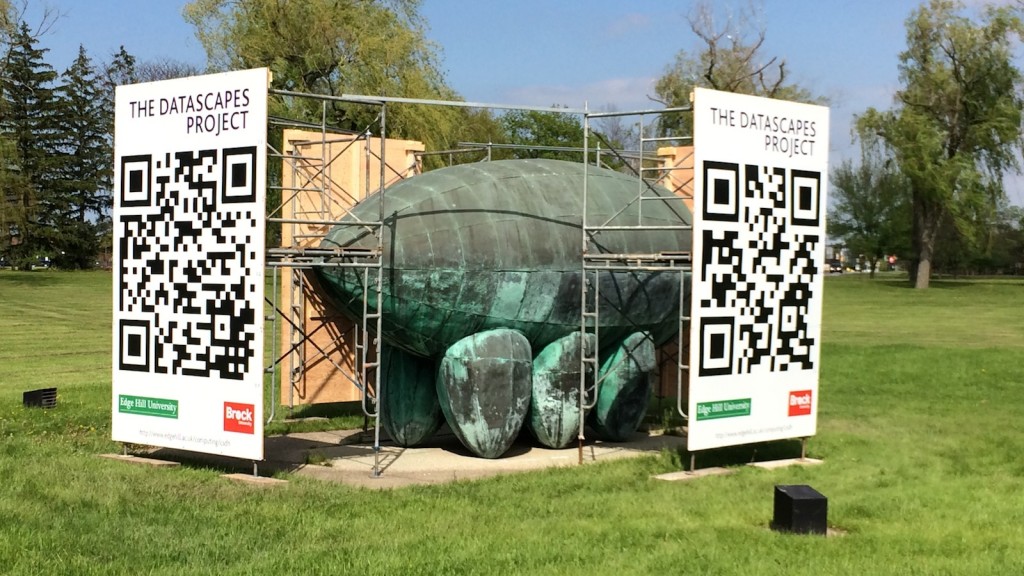
The hills are alive with the sound of … proteins?
Those attending Congress 2014 will have the rare opportunity to hear music – and see images – arising out of proteins involved with our senses of seeing, touching, hearing, tasting and smelling.
This will be displayed at the Isaac Brock traffic circle facing the Schmon Tower.
The new project is called DataScapes.
“It’s landscape art with a twist,” explains John Bonnett, Canada Research Chair in Digital Humanities and project head.
“Instead of being made with physical objects, the art is made with digital objects. They’re part and parcel of a medium called Augmented Reality: 3D computer generated objects and sound.”
To get in on the action, step into the Isaac Brock traffic circle and point your phone or tablet at the QR code posted on the She Wolf sculpture.
You’ll see a floating cube hovering over the She Wolf statue and 27-foot high monoliths surrounding the circle, Bonnett says. In addition to seeing the images, you’ll hear music based on configurations arising from two sets of data: protein and text.
Bonnett and colleagues obtained protein data from the National Institutes of Health in the U.S. Corresponding with the amino acids constituting those proteins is letters. The research team converted the letters into numbers, starting from A equaling 1 all the way to Z equaling 26.
Student composers in the Department of Music aligned those numbers with a musical scale to produce raw sounds. The composers then fashioned those sounds into a musical piece.
Bonnett explains that this is a growing trend in the sciences.
“There are a lot of individuals in the sciences who are interested in sonication of data,” he says. “The reason is, they’re trying to find significant patterns in large sets of data, so sound is one way to do that.
“A byproduct of that have been new forms of music emerging: you have DNA music, protein music, microbial music. There’s even music that’s been adapted from the emissions of planets, so there’s literally music of the spheres that’s being produced these days.”
To produce the images seen in the cube, colleague Bill Ralph with the Department of Mathematics used the numbers to create an algorithm that converted the numbers into images.
The other data set used to create the sound and images came from a “text” dataset. Bonnett isolated passages in the Holy Bible and gave the text to the student composer, who turned the letters into numbers and then converted those numbers into music strings to make a music composition.
A group from the Department of Computer Science, under the direction of Michael Winter, developed the project’s app, which was then completed by Mark Anderson and Joseph Bolton from Edge Hill University in the UK.
To view the display at the Isaac Brock traffic circle, download the app from the DataScapes Project site and install the app onto your iPad or Android tablet computer. Once you have done so, proceed to the Isaac Brock traffic circle, activate the app, and point it at the QR codes situated on the side of the She Wolf statue.
